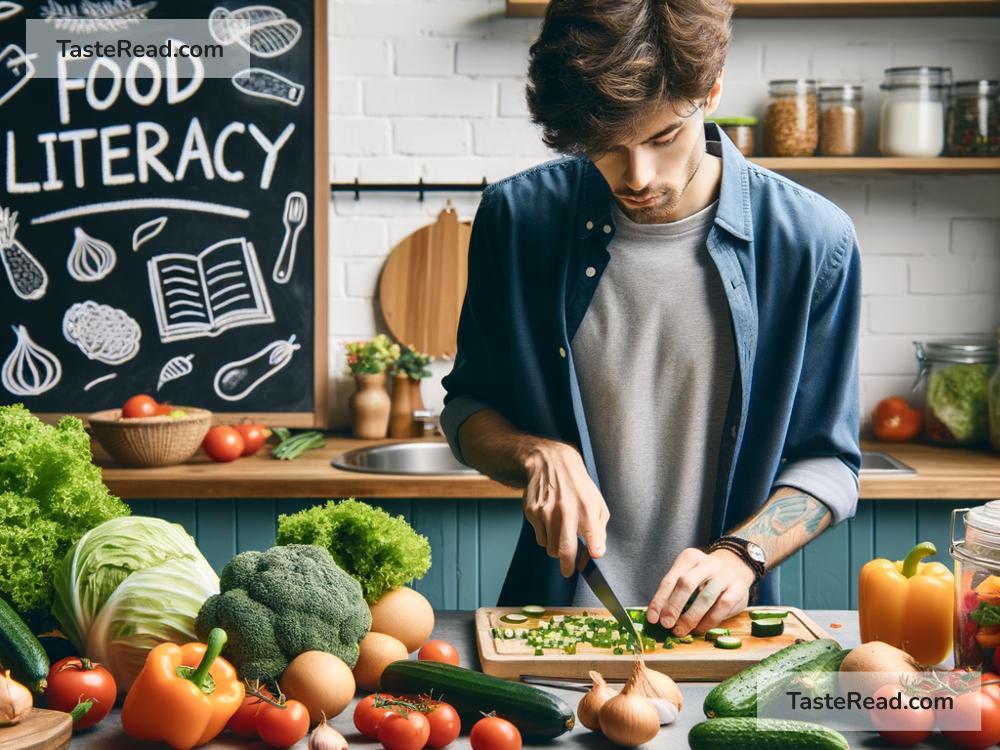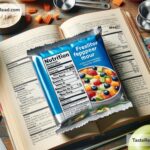The Impact of Food Literacy on Nutrition
Food is one of the most important parts of our lives. It gives us the energy we need to work, play, and stay healthy. But today, many people struggle to make the right food choices because they don’t fully understand the connection between what they eat and how it affects their health. This is where food literacy comes in. Food literacy is a vital skill that helps people make informed decisions about their diets and, ultimately, their well-being. In this article, we’ll explore what food literacy is, why it matters, and how improving it can lead to better nutrition.
What is Food Literacy?
Food literacy means knowing how to choose, prepare, and understand food in a way that supports a healthy lifestyle. It involves basic skills like reading food labels, knowing how to cook nutritious meals, and understanding where food comes from. Food literacy is not just about learning what to eat; it’s also about understanding how food impacts your body, the environment, and even society as a whole.
For example, if you know why eating fruits and vegetables is important, you’re more likely to include them in your meals. If you understand how too much sugar can harm your health, you’re less likely to reach for sugary snacks. These small choices can add up to big changes in how healthy you are over time.
Why Does Food Literacy Matter?
Food literacy matters because it gives people the knowledge and confidence to make better choices about what they eat. Unfortunately, many people around the world lack food literacy. Busy lifestyles, processed foods, and limited access to fresh ingredients make it easy to rely on unhealthy options. Without the skills to make informed decisions, people often end up eating foods high in sugar, salt, and unhealthy fats. This can lead to health problems like obesity, diabetes, and heart disease.
Understanding food doesn’t just help your health—it also impacts the environment and society. For example, learning about sustainable food choices, such as eating less meat or choosing local produce, can reduce your carbon footprint. By being food literate, you’re not just helping yourself; you’re also contributing to a healthier planet.
How Food Literacy Can Improve Nutrition
When people become food literate, their eating habits often improve. Here are some specific ways food literacy can positively impact nutrition:
1. Healthy Choices
Food-literate people know how to read nutrition labels and understand what different ingredients mean. This helps them pick products that are high in nutrients and avoid foods with too much sugar, salt, and harmful additives. For example, someone who understands food labels might choose yogurt with low sugar and high protein instead of sugary desserts.
2. Cooking Skills
Food literacy teaches people how to cook nutritious meals at home. Cooking at home can be cheaper and healthier than eating out or relying on frozen meals. By preparing food themselves, people have control over the ingredients used, which means fewer additives and unhealthy fats—and more veggies, whole grains, and lean proteins.
3. Meal Planning
When you know how to plan meals, you’re less likely to rely on fast food or snacks when you’re hungry. Food-literate people can create balanced meals that include fruits, vegetables, healthy fats, and proteins. Meal planning also helps avoid food waste—it ensures you use the food you buy before it spoils.
4. Mindful Eating
Food literacy isn’t just about what you eat; it’s also about how you eat. Mindful eating means paying attention to your food and enjoying every bite. This helps prevent overeating and promotes better digestion. Food-literate individuals are more likely to eat slowly, savor flavors, and recognize when they’re full.
5. Cultural Connection
Food literacy allows people to explore and enjoy foods from different cultures while staying healthy. It helps them understand how traditional diets—like Mediterranean meals or Asian-inspired dishes—can offer valuable nutrients while still being delicious.
How to Improve Food Literacy
Improving food literacy starts with small steps. Here are a few ways to build your food knowledge and skills:
-
Learn to Cook: Start simple with easy recipes. Teaching kids how to cook early in life can also help them develop a lifelong appreciation for healthy eating.
-
Read Food Labels: This helps you understand the nutrients in the foods you eat. Pay attention to serving sizes, calories, and ingredients.
-
Research Nutrition: Find reliable resources online or talk to dietitians to learn more about how different foods affect your health.
-
Grow Your Own Food: If possible, try gardening. Growing fruits, vegetables, or herbs can help you appreciate how food is produced.
-
Teach Others: Share what you learn with friends and family. Helping others improve their food literacy can create positive change in your community.
Conclusion
Food literacy plays a big role in shaping our nutrition and overall health. When people understand food better—where it comes from, what’s in it, and how to prepare it—they can make smarter choices for themselves and the planet. Improving food literacy doesn’t have to be overwhelming. Small steps, like cooking at home and reading labels, can make a huge difference.
Whether you’re just beginning your food literacy journey or you already know a lot about healthy eating, remember that knowledge is power. The more we educate ourselves and others, the healthier and happier our lives can be. So, let’s work toward a future where everyone feels confident making food choices that nourish both their bodies and the world around them!


